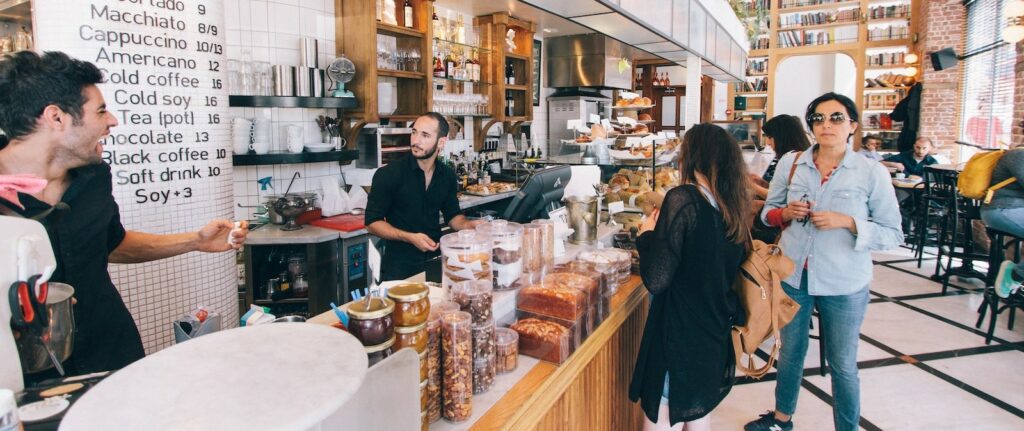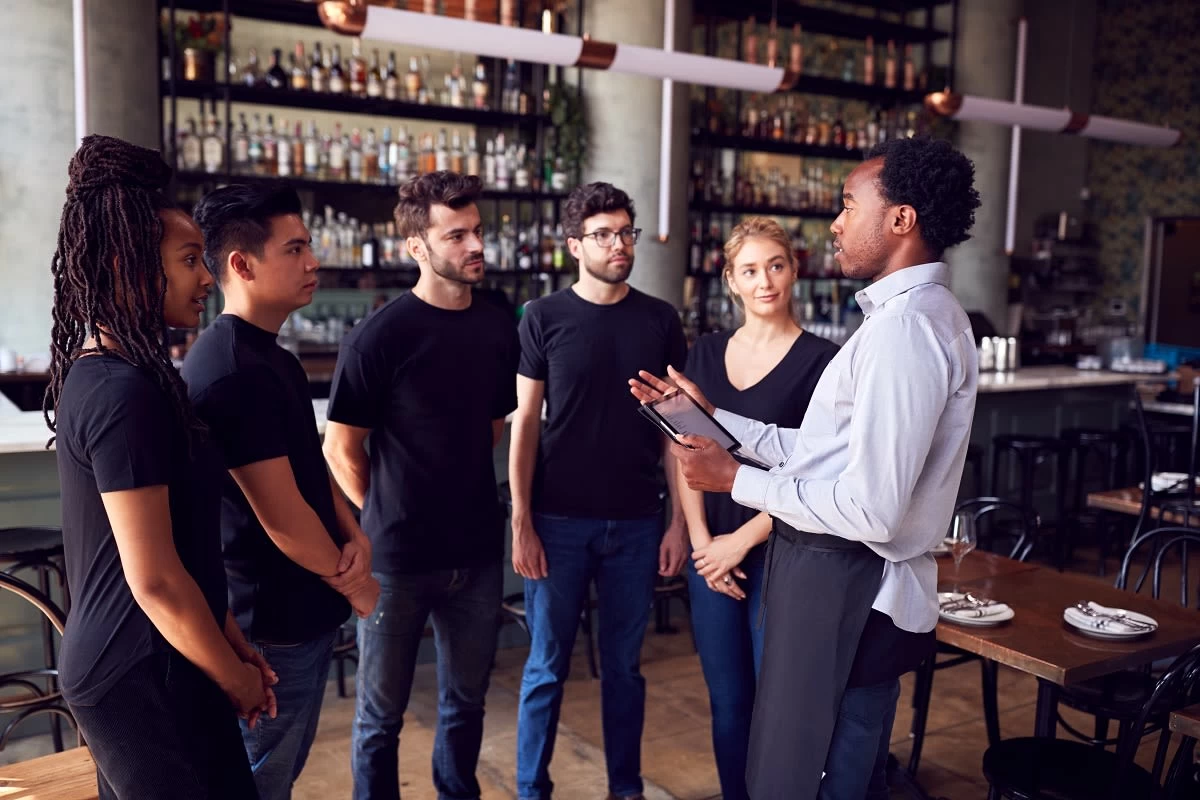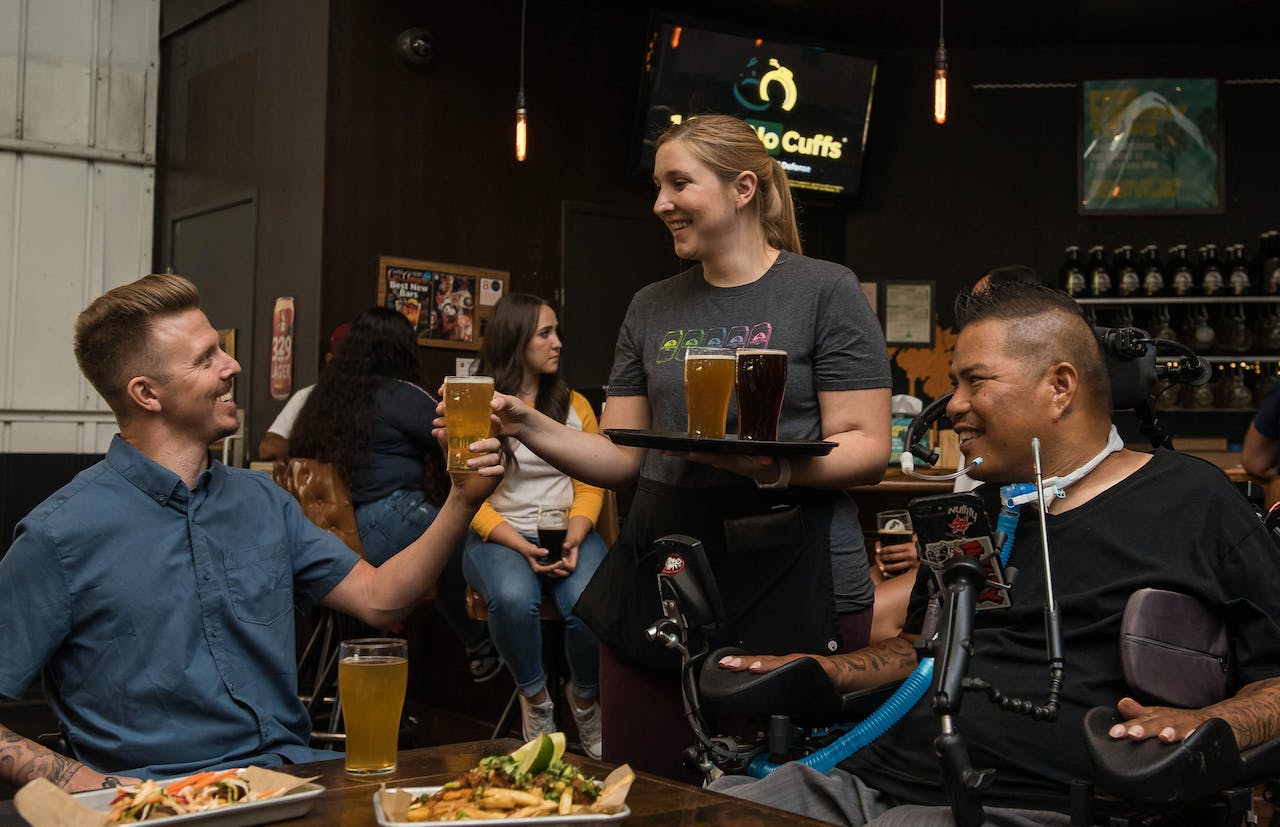Learn why customer satisfaction is vital for the success of any restaurant, regardless of its size, location, demographics, or food quality.
Restaurant owners often struggle to identify the key factors that influence customer satisfaction, especially when their views differ from what customers want.
The focus should be on meeting the needs of guests, not on what restaurants feel they need. The more satisfied customers are, the more likely they are to spend more, return regularly, share positive reviews, and recommend the restaurant to others.
Restaurants must prioritize customer convenience over their own convenience. It’s not about what restaurants need to feel satisfied, it’s about what guests feel restaurants need to do to satisfy them.
It’s important not to inconvenience guests at a restaurant’s convenience.
There are a variety of reasons customer satisfaction is important, but let’s sum it up to these powerful statistics:
-
- 7 out of 10 U.S. consumers say they’ve spent more money to do business with a company that delivers great service. (American Express)
- A moderate increase in customer experience generates an average revenue increase of $823 million over three years for a company with $1 billion in annual revenues. (Temkin Group)
- A Harvard Business School researcher found that a one-star increase in a restaurant’s Yelp rating correlated with a 5-9% increase in revenue.
- 25 percent more people turn to consumer reviews on sites like OpenTable, Yelp, and TripAdvisor than those who rely on reviews by professional food critics. 60 percent read reviews before going out for a meal, a habit that takes precedence over getting directions to a restaurant or looking at food photos. (OpenTable)
- Diners say that complimentary extras (69 percent) and seating preferences (65 percent) would go far in increasing customer loyalty. (OpenTable)
- 75 percent of consumers will not visit or patronize a restaurant with negative reviews about its cleanliness. (Harris Poll for Cintas Corporation)
- 38% of all customer complaints are on social media and review sites. Restaurants get only 14% of all complaints. (Jay Baer, Food Service Magazine)
- 72% of customers are likely to share a positive experience with six or more people, emphasizing the importance of positive customer perceptions. (EasyEat)
What Contributes to Poor Restaurant Customer Service?
Neglecting the fundamentals of running a business
It can be easy for new and old businesses alike to neglect the fundamentals of running a restaurant. Let’s get back to the basics.
Every restaurant owner should not only have a written system that works, but every employee should follow the system. Management should create checklists and ensure they follow them repetitively.
Checklists should remind team members that bathrooms need to be cleaned multiple times daily, staff should turn music on, open signs should be lit, inventory procedures have checks and balances, and internal operations should be followed daily.
Misunderstanding what customers want and need
A lot of restaurant owners assume that since they created the restaurant, and customers agree with them when they provide their own opinions, a majority of their customers feel the same way.
There is power in restaurant surveys. The ability to find out what customers want, but may not have been sharing with you, is important. When utilizing this data effectively, businesses can increase restaurant customer satisfaction easily.
Lack of cleanliness
No one likes a dirty restroom, peeking into a dirty kitchen, stepping on dirty floors, or eating on dirty tables.
Non-versatile menu options
Worldwide, allergies affect up to 30% of the population. Allergies can range from peanuts, meats, gluten, and milk. This should be enough of a cause to create menu versatility, and it doesn’t even include the limitations that restaurant-goers experience with diets due to ethical or health reasons.
It’s important to not only provide menu items that differ between diets but also to create menu versatility for guests who ask for the removal of ingredients.

Underestimating the power of unhappy customers
The statistics supporting the power of an unhappy customer are staggering. 96% of unhappy customers don’t complain. 91% will leave and never come back. A dissatisfied customer shares their experience with between 9-15 people. 13% of unhappy customers tell 20 people or more.
Not creating enough reasons for customers to come back
Without loyalty programs, community involvement, a unique brand atmospheric experience, or exceptional customer service, customers will leave without coming back.
Poor food quality
Many fast-food restaurants are struggling to keep up with the desire for fresh foods. Moving away from the days when speed was everything, now it’s all about quality and brand experiences.
Lack of brand consistency
According to smallbizgenius, Consistently presented brands are 3.5 times more likely to enjoy excellent brand visibility than those with an inconsistent brand presentation. Brand consistency statistics published by Demand Metric suggest that uniformly presented brands are 3.5 times more visible to customers.
No incentives/Poor Incentives
A RetailMeNot survey found that almost three-fourths of Americans say offers are a top factor when deciding where and what to buy online. Four out of five Americans say finding a great offer or discount is on their mind throughout the entire purchase journey.
High-value brands like Starbucks have learned long ago that loyalty programs bring customers back again and again. In fact, according to CNN, super-loyal customers who use Starbucks’ membership program account for about 40% of sales at the company’s US stores.
“Starbucks Rewards continues to be a powerful enabler of loyalty,” CEO Kevin Johnson said while discussing that quarter’s earnings in a call with analysts.
Slow WiFi
According to eMarketer, Free Wi-Fi is the most important restaurant tech offering among US internet users deciding where they should dine. In fact, 70% of consumers cited the availability of guest WiFi as an important factor in deciding where to dine.
According to Small Business Trends, businesses that offer WiFi marketing to increase sales had a success rate of 72 percent. 50% of guests spend more money when they stay and use guest WiFi, and this doesn’t even include the percentage of guests that come back when they receive email communications.
WiFi marketing drives new traffic, increases the amount that visitors spend when they visit restaurants, and improves customer loyalty which can drive revenue up by at least 25%.
Bad customer service
Did you know that after one poor experience with a brand, 71% of guests won’t visit ever again? Losing just one customer can be costly, so it’s important to look at the bigger customer experience picture.
If one puzzle piece is missing, a restaurant could receive significant losses.
Even if a location is popular and business is booming, customer satisfaction should be taken seriously. Regardless of the food, drinks, and atmosphere, customer experience is the most important component to improve your restaurant’s customer satisfaction.
Bad environment
If a location is outdated, amplifies sound too much, has music that is too loud, or has no music at all, consumers classify it as a bad environment.
These are the top factors to improve a restaurant’s environment:
- Updated interior design: A restaurant’s physical environment will immediately evoke positive or negative feelings about a restaurant’s brand.
- Ambient light: While rarely mentioned, ambient lighting that is too bright or too dark has a high likelihood of becoming a deterrent and a silent brand detractor.
- Colors: The colors of a restaurant will immediately and subconsciously showcase the quality of a brand. They also evoke specific feelings. For example, red and yellow stimulate appetites, and blue decreases appetites but increases feelings of calmness and comfort. Blue creates the appearance that time passes faster. Red restaurants create the appearance that time passes by slower for guests.
- Music: Multiple studies show that music has a direct impact on the amount the guests spend when visiting restaurants. Music should match a brand’s image. Slow music increases a customer’s willingness to spend more money, while faster music can contribute to more alcoholic beverage sales and create a more casual environment.
- Background noises: Restaurants should have a medium sound level. Customers in quiet restaurants spend more money and eat more of their food. But they can also contribute the low sound levels to a low-quality restaurant with high-cost food. Guests in noisy restaurants both spend and eat less. So, if traffic is high it’s important to have interior soundproofing present.
- Aesthetics: Not only do guests prefer a positive overall brand interior appearance, but attractive restaurants are also an additional social media marketing tool.
Unreasonable pricing
It’s important to create menu pricing that matches customer expectations while providing a significant return on ingredient investments. Below is a graph that shows the average amount that guests spend (per person) at fast-food restaurants, takeout restaurants, food delivery services, and full-service restaurants according to Statista.
Lack of future planning
In the restaurant industry, you could be popular one year, and the next year, you could experience a downturn. It’s important not to dwell too much on current successes. Evaluate what competitors are doing, and utilize innovative ways to improve satisfaction and profits.
No competitive differentiation
While it’s never advisable to mirror your competition, tracking what’s working and not working for competitors provides brands with the opportunity to create positive differentiation.
Poor location
Poor future planning creates poor location decisions. When brainstorming a new location, it’s important to pay close attention to local demographics to ensure brand integrity and profitability. It’s important to remain agile if a location’s demographics change.
What’s your favorite way to increase restaurant customer satisfaction? Leave us a comment below!
For info on how to improve your restaurant customer satisfaction using Bloom, click on the banner below!
Delivering Exceptional Restaurant Customer Service
Providing excellent customer service is essential for success. Satisfied customers are more likely to become loyal patrons, leave positive reviews, and recommend your establishment to friends and family.
So, what are the keys to delivering exceptional restaurant customer service? Here are some proven strategies:
Start with a Friendly, Welcoming Atmosphere
The customer experience begins the moment guests walk through your doors. Make sure your front-of-house staff creates a warm, inviting ambiance from the start.
Greet customers with genuine smiles and a friendly, attentive demeanor. Promptly escort them to their table and ensure they feel valued and appreciated.
The physical environment also plays a big role in setting the tone. Keep your dining room clean, well-lit, and tastefully decorated. Background music should be at a comfortable volume, allowing customers to converse easily.
Small touches like fresh flowers or art on the walls can enhance the overall atmosphere.
Prioritize Quick, Efficient Service
Customers want their dining experience to be smooth and effortless. Ensure your staff is properly trained to provide prompt, attentive service.
Food and drinks should arrive at the table in a timely manner, without unnecessary delays. Keep a watchful eye on each table, anticipating needs before customers have to ask.
If an order takes longer than expected, proactively communicate the reason to the customer and offer a complimentary appetizer or drink to make up for the wait. Quick, efficient service goes a long way in keeping customers satisfied.

Anticipate and Meet Customers’ Needs
The best restaurant staff members are highly attuned to their customers’ needs and preferences. Train your team to observe body language, facial expressions, and other nonverbal cues that indicate how a customer is feeling.
Is their water glass getting low? Do they seem confused about the menu? Prompt action to address these needs, before the customer has to ask, demonstrates your commitment to their comfort and enjoyment.
Customize the service experience based on each customer’s preferences. Some may want frequent check-ins from the server, while others prefer to be left alone.
Pay attention to the little things that make a difference, like remembering a regular’s favorite drink or asking about dietary restrictions. Going the extra mile to personalize the service will make customers feel valued and appreciated.
Empower Staff to Resolve Issues Promptly
No matter how well-trained and attentive your staff is, issues and complaints can still arise. The key is to empower your team to resolve problems quickly and efficiently, without the customer having to escalate the situation.
Encourage staff to take ownership of any problems that occur during the dining experience. Give them the authority to offer complimentary items, discounts, or other gestures to make things right.
Prompt, empowered problem-solving demonstrates your commitment to customer satisfaction and can turn a negative situation into a positive one.
In the rare event that a staff member is unable to resolve an issue, ensure there is a clear process for elevating the problem to a manager or other decision-maker. Customers appreciate having their concerns addressed swiftly and professionally.

Foster a Culture of Exceptional Service
Providing great customer service should be a core part of your restaurant’s culture, embraced by every member of your team. Make it clear during the hiring process that a customer-centric attitude is a non-negotiable requirement. 3
Provide comprehensive training on service best practices and empower staff to go above and beyond for customers.
Recognize and reward employees who consistently deliver exceptional service. This could take the form of bonuses, public praise, or career advancement opportunities.
Modeling and reinforcing the behavior you want to see will inspire your team to maintain high service standards.
Additionally, solicit regular feedback from customers on their service experiences. Use this input to identify areas for improvement and ensure your team is meeting (or exceeding) customer expectations. Maintaining an open dialogue with patrons demonstrates your commitment to continuous service enhancement.
Ultimately, a restaurant’s success hinges on its ability to make customers feel valued, appreciated, and eager to return. By prioritizing exceptional service at every touchpoint, you’ll position your establishment for long-term growth and profitability.
Key Takeaways:
- Create a friendly, welcoming atmosphere from the moment customers walk through the door.
- Provide prompt, efficient service to keep the dining experience smooth and hassle-free.
- Anticipate and meet customers’ needs before they have to ask.
- Empower staff to resolve issues quickly and effectively.
- Foster a culture of exceptional customer service throughout your organization.
- Continuously solicit feedback and improve your service offerings.
Putting these strategies into practice will help you deliver an outstanding customer experience that keeps patrons coming back time and time again.
Discover Bloom Intelligence
Bloom Intelligence is an AI-powered restaurant marketing platform. It includes a powerful customer data platform, automated guest data collection, one-click segmentation, behavior-triggered marketing automation via email and SMS, reputation management, and reporting tools.
Data is collected from sources like WiFi logins, online reservation systems, online ordering platforms, POS systems, website forms, social media, and more. This makes it simple to analyze and segment your guest personas for your restaurant’s digital marketing and operations decisions.
Bloom makes guest data collection effortless, which allows you to quickly execute the strategies listed above, saving you time, increasing customer lifetime values, attracting new guests, improving your reputation, and boosting your bottom line.
Call us or schedule a free demo online and Bloom will show you how our restaurant marketing platform can help you save time and increase your customer lifetime values by automatically building first-party customer databases, unlocking important guest insights to trigger automated marketing at the right time and place, discover true guest sentiment, save at-risk guests, increase your current guests’ frequency, and find new guests.
Click Here to Schedule a Free Online Demo, or call 727-877-8181 to see how we can help you save time and drive tangible results for your restaurants.





.svg)